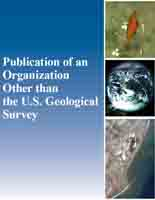Geophysical Characterization of the heat source in the Northwest Geysers, California
Links
- Document: Report
- Download citation as: RIS | Dublin Core
Abstract
The Geysers, in northern California, is the largest energy producing geothermal field in the world. Looking to expand capacity, the operator Calpine Corporation developed an anomalously hot (~400 °C at 2.5 km depth) part of the field in the northwest Geysers, including testing of an enhanced geothermal systems (EGS). Though the area is anomalously hot, geophysical methods have failed to adequately image any inferred magmatic heat source. Gravity measurements were collected and jointly modeled with existing magnetic data along a two-dimensional profile aligned with an existing geologic cross-section. The key feature of the potential field model is a low-density, low-susceptibility body below the EGS at 5 km depth. Magnetotelluric (MT) measurements were collected around the northwest Geysers and modeled in three-dimensions to characterize subsurface resistivity structure. The resistivity model images an extension of a Quaternary granitic pluton locally known as “the felsite” under the EGS project and a possible zone of partial melt (<10%) below 7 km in the northwestern part of the field.
Study Area
| Publication type | Conference Paper |
|---|---|
| Publication Subtype | Conference Paper |
| Title | Geophysical Characterization of the heat source in the Northwest Geysers, California |
| Year Published | 2019 |
| Language | English |
| Publisher | Stanford University |
| Contributing office(s) | Geology, Minerals, Energy, and Geophysics Science Center |
| Description | 7 p. |
| Larger Work Type | Book |
| Larger Work Subtype | Conference publication |
| Larger Work Title | Proceedings, 44th Workshop on Geothermal Reservoir Engineering |
| Conference Title | 44th Workshop on Geothermal Reservoir Engineering |
| Conference Location | Stanford, CA |
| Conference Date | February 11-13, 2019 |
| Country | United States |
| State | California |
| Other Geospatial | Northwest Geysers |


